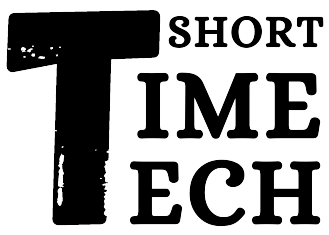In 2024, smart wearables are revolutionizing personal health and fitness management like never before. As technology advances, next-generation fitness trackers and smartwatches are emerging with enhanced features that cater to a broad range of needs, from comprehensive health monitoring to sophisticated lifestyle management. This article explores the latest trends in smart wearables, how they are shaping the future of fitness and health, and their implications for users.
Advances in Fitness Tracking Technology
Smart wearables have come a long way from their initial iterations, which primarily tracked basic metrics like steps and calories burned. In 2024, fitness trackers and smartwatches offer an array of advanced features that provide users with deeper insights into their health and performance.
1. Advanced Health Monitoring
Next-gen fitness trackers are now equipped with state-of-the-art sensors capable of monitoring a wide range of health metrics. These include:
- Continuous Blood Glucose Monitoring: Modern devices offer non-invasive glucose monitoring, which is a game-changer for individuals managing diabetes or pre-diabetes. Continuous glucose monitoring (CGM) sensors provide real-time data on blood sugar levels, helping users make more informed dietary and lifestyle choices.
- Advanced Sleep Analysis: Enhanced sleep tracking features analyze not just the duration but also the quality of sleep. By measuring variables like REM sleep, deep sleep, and sleep disturbances, these wearables provide detailed insights into sleep patterns, aiding in the improvement of overall sleep quality.
- Stress and Recovery Monitoring: Newer models include stress monitoring and recovery metrics by measuring heart rate variability (HRV) and skin conductivity. This helps users manage their stress levels and optimize recovery periods between workouts.
2. Integration with Health Ecosystems
Smart wearables are becoming increasingly integrated with broader health ecosystems. Many devices now sync seamlessly with health apps and platforms, allowing users to consolidate their health data in one place. This integration enables:
- Personalized Health Insights: By aggregating data from various sources, wearables can provide personalized health insights and recommendations. For example, if a user’s sleep patterns indicate poor rest, the device might suggest specific lifestyle changes or interventions.
- Enhanced User Experience: Integration with third-party apps and services enhances the usability of smart wearables. This includes syncing with nutrition apps to track food intake or with mental wellness apps to provide guided relaxation exercises based on stress levels.
The Impact on Fitness and Lifestyle
The rise of smart wearables in 2024 is not just about technological advancements; it’s about how these innovations are changing how we approach fitness and overall well-being.
1. Motivating Users Through Real-Time Feedback
One of the most significant impacts of next-gen wearables is their ability to provide real-time feedback. This feature is highly motivating for users who want to track their progress and stay committed to their fitness goals. For instance:
- Real-Time Performance Metrics: During workouts, users can receive immediate feedback on metrics like heart rate, pace, and calories burned. This enables them to adjust their intensity and optimize their performance in real-time.
- Goal Setting and Achievement: Advanced fitness trackers allow users to set personalized goals and track their progress towards them. Achievements and milestones are celebrated with notifications, gamifying the fitness journey and keeping users engaged.
2. Improving Health Outcomes
By providing users with more comprehensive health data, smart wearables contribute to better health outcomes. For instance:
- Early Detection of Health Issues: Continuous monitoring of vital signs and health metrics can lead to the early detection of potential health issues. For example, abnormal heart rate patterns might prompt users to seek medical advice before conditions become severe.
- Enhanced Wellness Programs: Organizations and health providers are increasingly using wearables to develop and implement wellness programs. These programs can be tailored to individual needs based on data collected from wearables, promoting healthier lifestyles across various populations.
Conclusion
The rise of smart wearables in 2024 marks a significant leap forward in how we manage our health and fitness. With advanced health monitoring features, seamless integration with health ecosystems, and a profound impact on motivation and wellness, next-gen fitness trackers and smartwatches are set to become indispensable tools in the pursuit of a healthier, more active lifestyle. As technology continues to evolve, we can expect these devices to play an even more integral role in enhancing our understanding of personal health and fitness.

